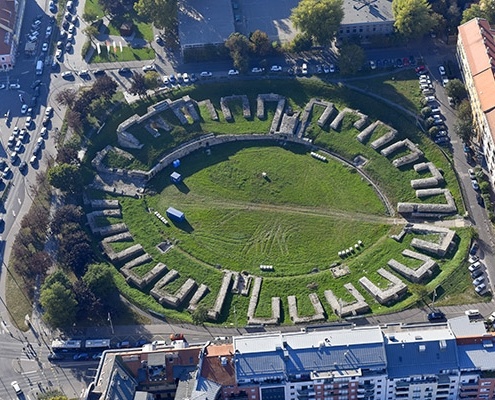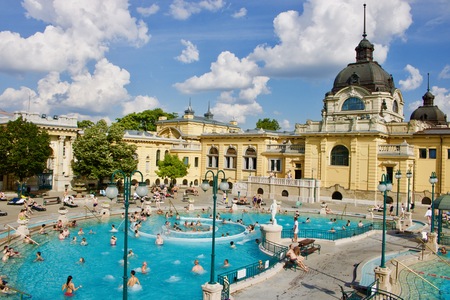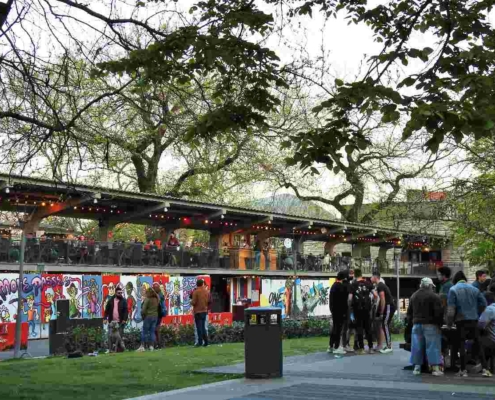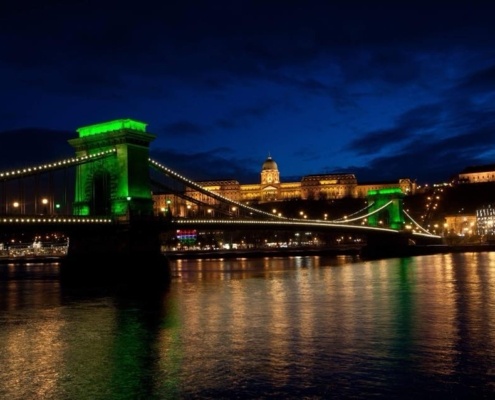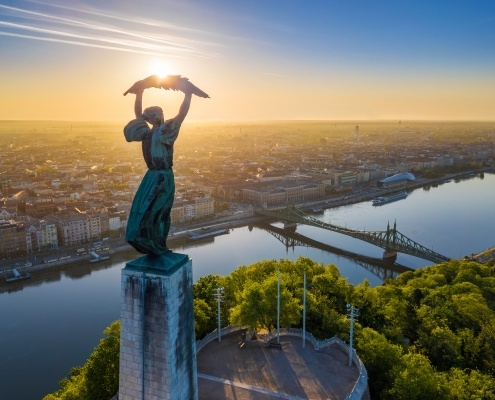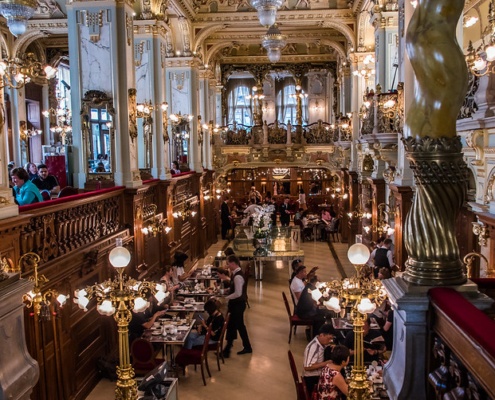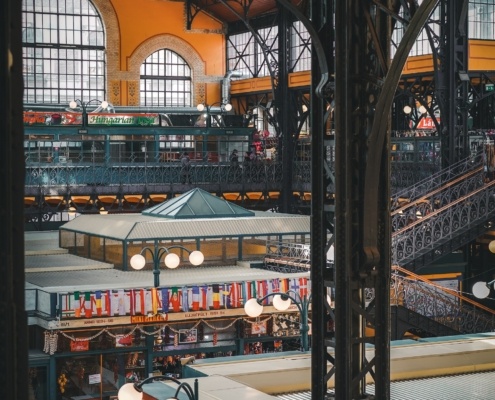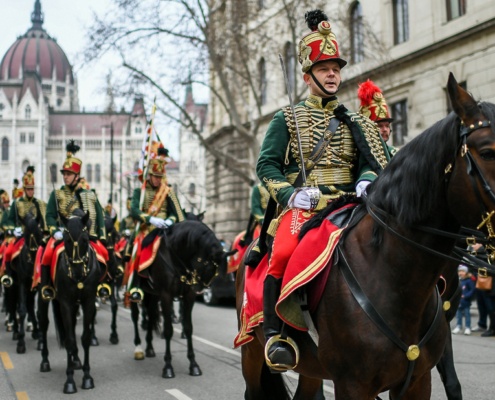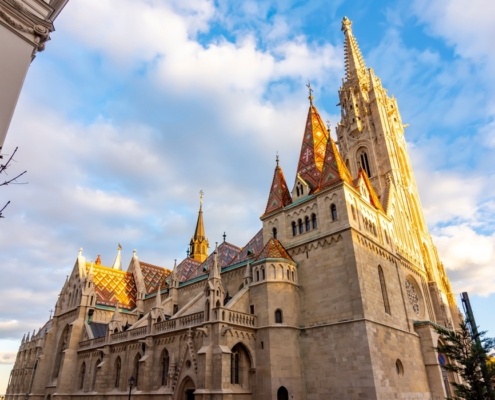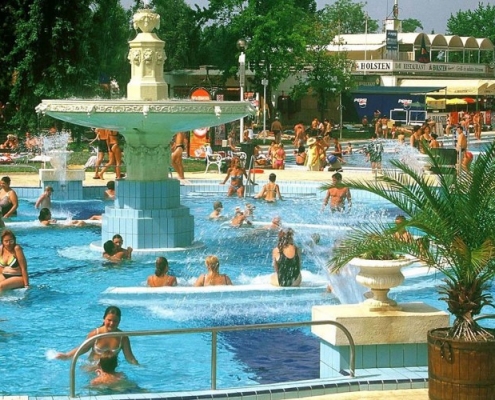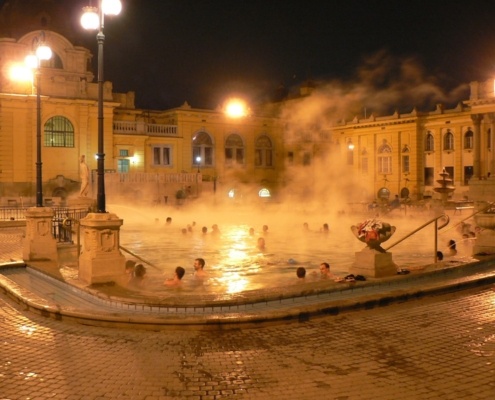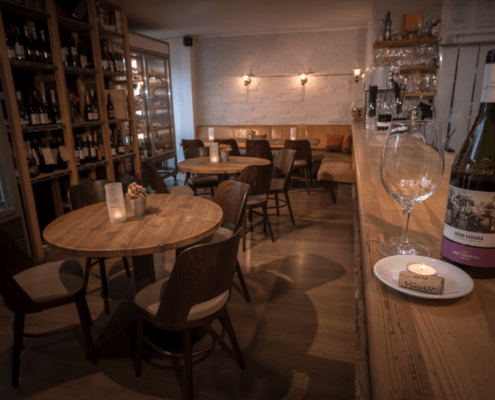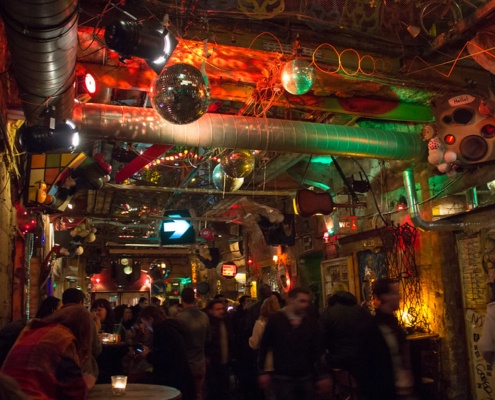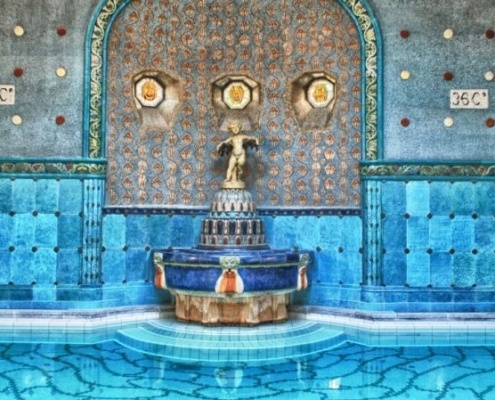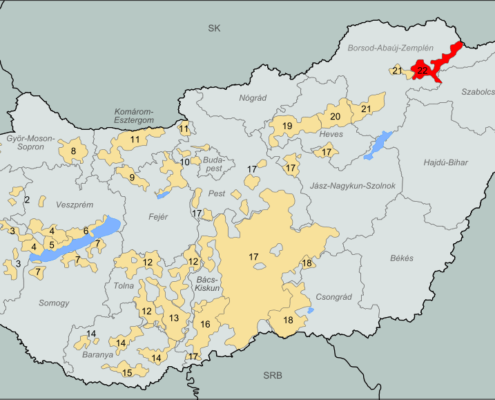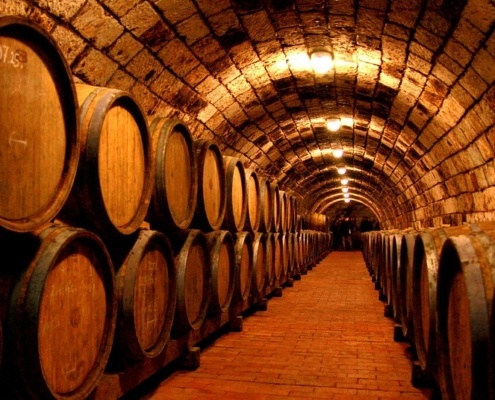If you only spend 2 days in Budapest you might not be able to visit all of them but we recommend checking out as many as you can! In the heart of Central Europe, where the Danube River gracefully winds its way through a tapestry of history, culture, and architectural splendor, lies Budapest – a city that effortlessly weaves together the old and the new. As the sun sets over the Danube, painting the sky with hues of orange and purple, Budapest transforms into a city of lights, casting a magical glow on its historic landmarks. What better way to experience this enchantment than by exploring the city’s panoramic views? For every traveler, ascending the heights of Budapest is not merely an option – it’s a pilgrimage to witness the city’s beauty in its entirety. In this blog, we embark on a journey through Budapest’s best viewpoints, each offering a different perspective of a city that has stood the test of time.
1. Fisherman’s Bastion: A Must Visit in Your 2 Days in Budapest
You can’t have 2 days in Budapest without visiting the Buda Castle! That side of the Danube is all about the views and the highlight of the neighborhood is the Fisherman’s Bastion for sure. It was built in the 19th century for Hungary’s Millennium celebrations, is a must-visit spot in Budapest. It looks like a fairytale castle with seven towers, reminiscent of Disney World, and offers a fantastic view of the city, including landmarks like Margaret Island and the Parliament Building. It’s a pleasant 10 to 15-minute uphill walk from the Chain Bridge. The lower level is free, but if you want to go to the top, it costs 1200 HUF (as of 2024). To save money, visit before 9 am or after 7 pm in the low season, or before 9 am or after 9 pm in the main season. Get your tickets at the booth across from Matthias Church. The only access to the top floor of Fisherman’s Bastion is next to the ticket office. You can also find a toilet and a drinking tap (operational from May to October).
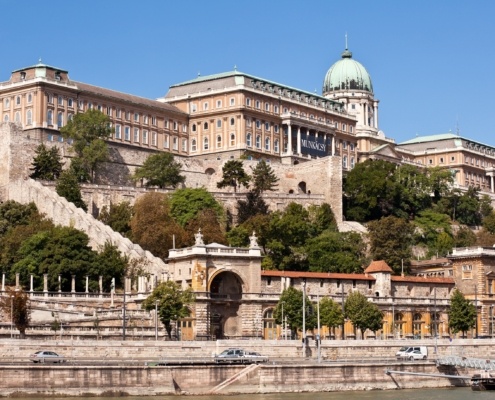
2. Savoya Terrace (outside Buda Castle): Panoramic Splendor in Proximity
Just a 15-minute walk from Fisherman’s Bastion, the Savoy Terrace is situated in front of the entrance to the National Gallery, providing breathtaking views of Budapest, the Danube River, Pest side panorama, and Gellert Hill. The view is free, and if you’re feeling hungry, the National Gallery has a café and a delightful museum shop for art lovers. You can easily return to the Elisabeth Bridge via Buda Castle Bazaar, enjoying a beautiful walk in the garden with even more spectacular views.
3. Gellért Hill with Citadel: A Scenic Retreat Overlooking Budapest
This 235m (771 ft) high hill, overlooking the Danube, is situated at the Buda end of the Liberty Bridge. Our suggestion: kick off your day with an early breakfast at the Grand Market (open from 6 am), cross the Liberty Bridge, ascend the hill, let yourself wander, savor the breathtaking view, enjoy the pleasant walk, and embrace nature. Follow it up with a relaxing afternoon at the Gellert Thermal Baths. The optimal times for visiting the hilltop are at sunrise or sunset. The uphill walk is not strenuous or challenging; most people should manage it well. While the Liberty Monument and the Citadel are still undergoing construction, you can access the hilltop for an overall view, with maps available to guide you. Note that individuals with disabilities or those using strollers might find certain paths challenging to navigate.
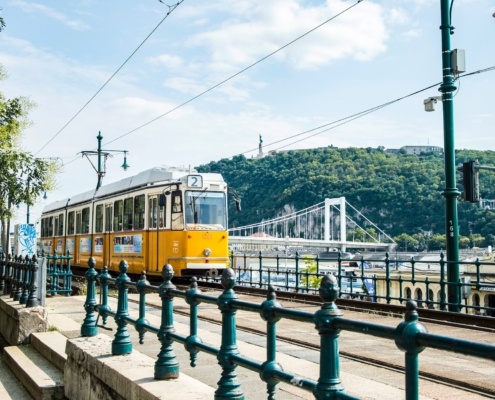
4. Danube Promenade in Pest: A Riverside Stroll Through History
The Danube Promenade in Pest has been a popular destination for leisurely strolls since the 19th century. This attractive esplanade is located on the Pest side of Budapest along the Danube River. Along the walkway, you’ll find numerous restaurants, cafés, bars, casinos, and five-star hotels. Begin your walk at the white Elisabeth Bridge and conclude it at the Parliament, passing by various landmarks such as the Inner City Parish Church, Roman Ruins under a glass roof known as Contra Aquincum, the Municipal Concert Hall, the charming Little Princess statue, the Gresham Palace, the Shoe Memorial for Holocaust martyrs, and the Parliament itself.
Save your appetite for later hours, as dining along the riverbank can be pricey. Consider having a delightful breakfast or lunch just an 8-minute walk from the Parliament in the “Újlipótváros” neighborhood. Look for Pozsonyi Road, which is lined with cafés, restaurants, bookstores, and art galleries. There’s something for everyone there.
5. Margaret Bridge: Budapest’s Panoramic Heartbeat
Another spectacular view can be enjoyed from the middle of the Margaret Bridge. One of the most distinctive features of the bridge is its unique V-shape, with an angle of 165 degrees where it connects to Margaret Island. The optimal times to visit are during sunrise or when the surroundings are illuminated. You can easily reach the spot by taking tram N.6 or 4 and getting off at the “Margitsziget / Margit híd stop,” right in the middle of the bridge. From this vantage point, you’ll get an unusual angle of the Hungarian Parliament, the Matthias Church and Fisherman’s Bastion, and Gellért Hill. If you’re in need of fresh air or a tranquil space, consider visiting Margaret Island. This popular recreation spot, situated in the heart of Budapest, boasts quiet walkways, flower gardens, romantic ruins, and century-old trees. The best time to explore Margaret Island is from May to October.
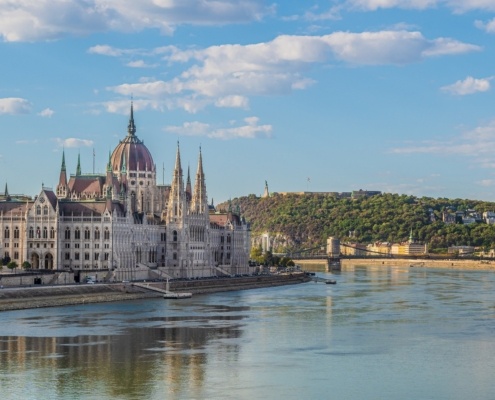
6. Batthyány tér: Capturing Budapest’s Elegance Across the Danube
Batthyány tér is the perfect spot for capturing stunning photos of the picturesque Parliament building across the Danube River. You can reach this location by taking the M2 metro or by walking from Margaret Bridge (a 15-minute stroll from the Buda end of the bridge). On the southern side, you’ll discover the Baroque Church of St Anne, renowned for having one of the most visually appealing interiors among baroque churches in Budapest. Noteworthy features include a magnificent late 18th-century pulpit and organ. Nearby, there’s a sizable food market and a budget-friendly eatery offering deep-fried delicacies, side dishes, and sweets. Moreover, there’s a café on the first floor of the market, providing a unique view of the Parliament. Two public toilets are available for added convenience.
Don’t miss the opportunity to join our daily Free Buda Castle Tour. Meet us at 2:30 pm at the metro exit.
7. Fővám Square: A Riverside Oasis Near the Grand Market
This square is situated just outside the Grand Central Market at the Pest end of the Liberty Bridge. While the beautiful market hall is a standout building on Fővám Square, it’s not the sole reason to visit; the square features a charming park that extends to the riverfront, providing excellent views of Gellért Hill, the Cave Church on the hillside, and the Danube River. From the top left corner, you can access a main pedestrian street called Váci utca, which is lined with restaurants and souvenir shops, but it’s worth noting that locals may not frequently dine there..
8. Petofi Bridge – A Southern Gem with Scenic Vistas
Discover the charm of Petofi Bridge, the second southernmost bridge in Budapest, celebrated by pedestrians, cyclists, and motorists alike. This picturesque crossing connects Buda to Pest, offering breathtaking views of the Liberty Bridge and the majestic River Danube. As you stroll across, you’ll be treated to impressive architecture on both sides of the river, making it a must-visit for anyone exploring the best views in Budapest. Although it’s not located in the heart of downtown Budapest, you can conveniently reach it by taking the number 4 or 6 tram. These trams gracefully traverse the river, providing splendid downriver views. Embrace the beauty of Budapest from this unique vantage point, adding another gem to your list of unforgettable city vistas.
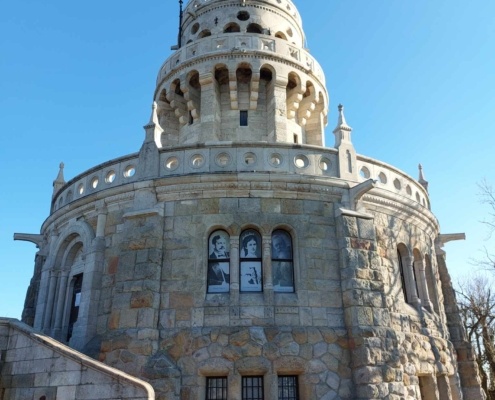
9. Elisabeth Lookout Tower – A Hidden Gem Offering Panoramic Splendor
That is a real hidden gem so if you only spend 2 days in Budapest and it is your first time you might skip that one. Although a bit removed from the city center, the Elisabeth Lookout Tower promises an experience that’s absolutely worth the journey. The quickest route from downtown is either by taking bus 21 to Normafa, followed by a 30-minute hike on well-marked concrete paths, or opting for buses 291 and a chairlift combo for a scenic ascent.
This lookout tower is a spectacle both inside and out, and the best part – it’s free to enter! The 360-degree view from the top is nothing short of impressive, providing a unique and elevated perspective on Budapest and its surroundings. Enhancing the experience, the site features a café, a self-service restaurant, and a delightful playground.
10. Tabán Garden of Philosophers – Unveiling Tranquility on Gellért Hill
Tucked away in a secluded corner of Budapest’s Gellért Hill, the Tabán Garden of Philosophers unveils a silent gathering of the world’s greatest religious figures. A mere 20-minute walk from the Buda end of the white Elisabeth Bridge and the Citadel, this hidden gem offers a panoramic view that includes the Danube River, the rear side of the Buda Castle, and the recently restored riding school of Buda. As you explore this secret haven, you’ll be treated not only to a striking view of the city of Budapest but also to a serene atmosphere that feels worlds away from the bustling urban life. Our tip is to enhance the experience by bringing a picnic basket or a glass of wine to savor amidst the tranquil surroundings. Additionally, for your convenience, the closest restroom can be found at the playground at Bérc utca 31, just opposite a wonderful supermarket and café. It’s an 8-minute uphill walk from this venue but well worth the visit for the picturesque setting and essential amenities. The Tabán Garden of Philosophers invites you to discover tranquility amidst the historical charm of Gellért Hill, making it an essential stop on your quest for the best views in Budapest.
Set for your Budapest adventure – pack your cameras, slip on comfortable shoes, and consider an early start to beat the crowds. If you visited all of them in your 2 days in Budapest, congratulations you probably have the best pictures of our town! For a deeper dive into the history of each site, join our daily FREE Budapest Tours. Let’s make your journey not only scenic but also filled with the captivating stories that make Budapest special. Lace-up, snap away, and let the exploration begin!

